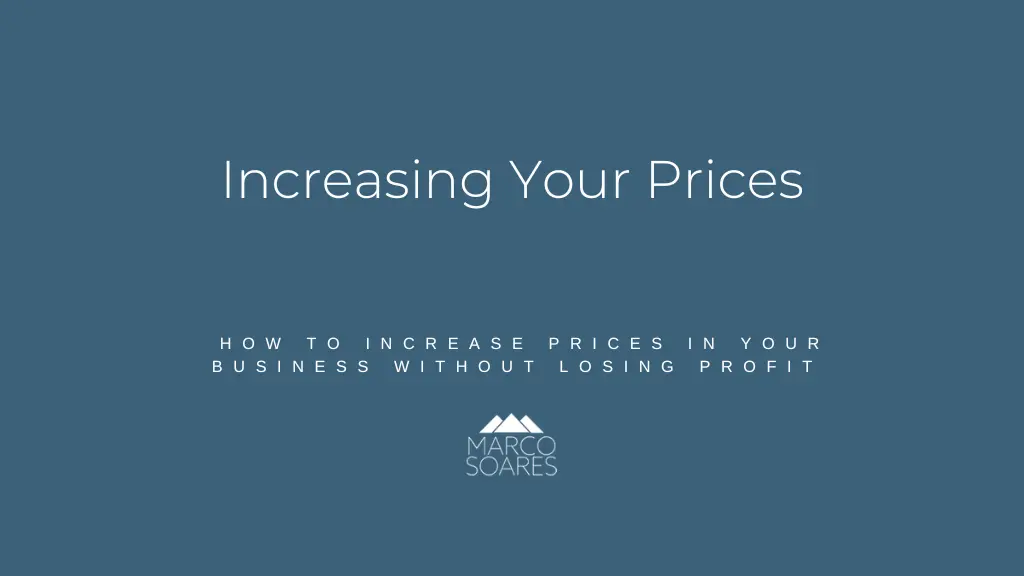If you’re experiencing rising costs, then this is the episode for you.
We are all under cost pressure at the moment. Labour, direct costs, and overheads are going up. Products and services are increasing in price, and as a business, you cannot sustain these increases time after time.
At some point, you need to pass costs on to your customers. Otherwise, you are putting yourself through the stress and heartache of being a business owner, only to find that by the end of the month or quarter, you haven’t made enough profit—or any profit. That’s not sustainable.
So, how do you increase prices intelligently and objectively? This is what this episode is all about.
Understanding Price Sensitivity
To increase your prices correctly, you first need to understand price sensitivity.
Price sensitivity is about how sensitive customers are to prices going up. Highly price-sensitive products are often those where substitutes are easily available at a similar quality and price.
For example:
- Highly price-sensitive products: easy to replace with alternatives.
- Medium price-sensitive products: require judgement calls from your sales and marketing teams.
- Low price-sensitive products: hard to substitute, unique, or inconvenient to replace.
Categorising your products and services into these three groups helps you approach pricing decisions more objectively.
Learn more about why growth isn’t always the answer when making business decisions.
Step 1: Identify the True Costs of Delivery
Before making price changes, calculate the true cost of delivery for all your products and services.
This may require crunching numbers, gathering data from your team, and reviewing in detail. You need to know the exact cost of each product or service before adjusting prices.
Step 2: Use the Margin Impact Chart
One of the most powerful tools for price-setting is the margin impact chart.
- Across the top: gross margins of a product or service.
- Down the left: potential price increases.
- In the middle: a volume matrix.
This shows how much sales volume you could afford to lose after a price increase and still generate the same gross profit.
Example:
If a product has a 40% gross margin and you raise the price by 10%, you could afford to lose 20% of sales volume and still generate the same gross profit.
This allows you to make pricing decisions with confidence rather than relying on guesswork or fear.
Explore how to maximise marketing ROI to align pricing with value creation.
Step 3: Consider Discounting Carefully
The same margin impact chart also applies when considering discounts.
For example, if a product with a 40% gross margin is discounted by 10%, you would need to sell 33% more volume just to break even on gross profit.
If that’s unrealistic, then discounting is the wrong decision. Most businesses should focus on maintaining or increasing margins rather than chasing higher sales volume.
Taking the Emotion Out of Pricing Decisions
By using price sensitivity analysis and the margin impact chart, you can take emotion and fear out of pricing decisions. This approach ensures that your pricing strategy is based on data and objectivity, not guesswork.
This methodology helps you:
- Protect profits.
- Avoid unnecessary discounting.
- Make sustainable pricing decisions.
Final Thoughts
Most businesses lose profitability due to margin shrinkage, not lack of volume. By following this structured approach, you can increase prices intelligently and ensure your business stays sustainable.
If you would like a copy of these margin impact charts, follow the instructions in the comments or email me directly.
See you next time on Mind Your Own Business.
You can also subscribe to my YouTube channel for more insights.
And if you want to explore wider strategies for scaling, visit Marco Soares Business Coaching.

